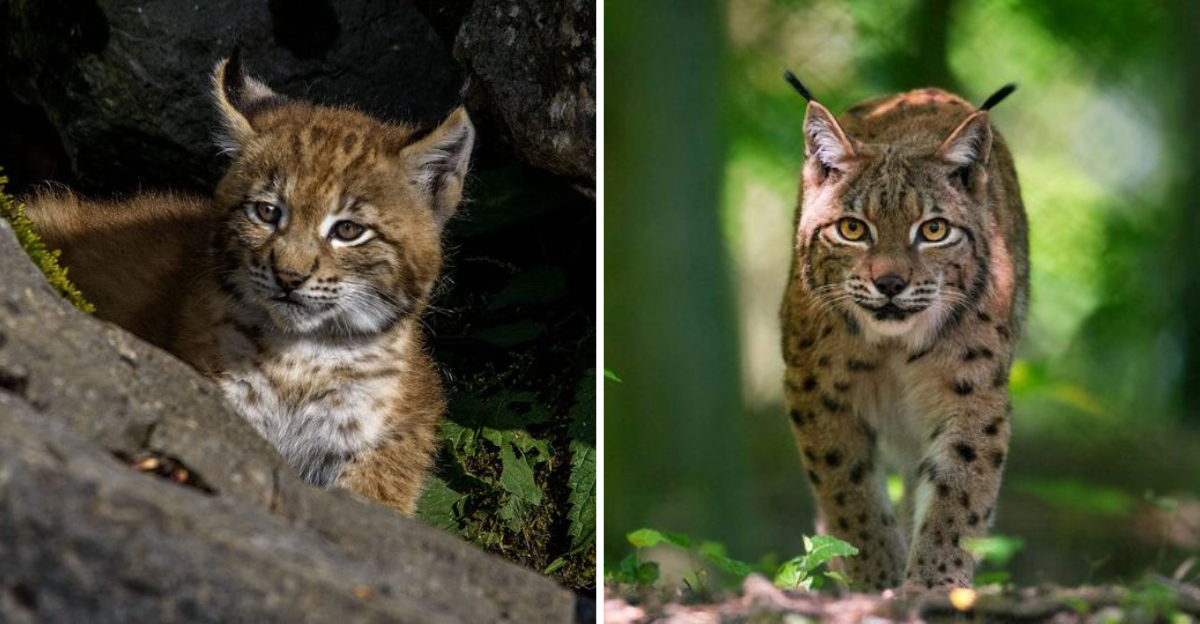📖 Table of Content:
The Eurasian lynx, a majestic yet elusive predator, operates at the crossroads of wilderness and competition. Sharing its habitat with formidable hunters like the gray wolf, the Eurasian lynx’s survival hinges on its strategic adaptations. This blog post delves into the intricate dynamics of how the lynx maneuvers within its ecosystem, avoiding direct conflict while thriving amid competition.
1. Diet and Hunting Behavior
Prowling silently through the underbrush, the Eurasian lynx exhibits unparalleled stealth. Its diet primarily consists of small to medium-sized mammals, such as roe deer and hares, and various birds. Using an ambush technique, it climbs close to its prey, delivering a swift, fatal bite. Capable of consuming up to 2 kilograms of meat a day, the lynx occasionally caches surplus kills. This adaptability in hunting allows it to survive even when competition is fierce. Its independence and patience are key traits that define its success as a solitary hunter.
2. Interactions with Gray Wolves
In the shared territories of Europe and Russia, the Eurasian lynx and the gray wolf navigate a delicate balance of coexistence. While wolves hunt in packs, targeting larger prey like red deer, the lynx is solitary, focusing on smaller animals. This distinction in prey choice reduces direct competition. However, scarcity can heighten tensions, sometimes leading to intraguild predation. Remarkably, observations in Belarus reveal lynxes preying on wolf pups and pregnant females, hinting at the lynx’s potential to influence wolf populations. Such interactions underscore the lynx’s role in the ecosystem.
3. Interactions with Wolverines
Eurasian lynxes and wolverines share a complex relationship marked by competition over carrion. Wolverines often scavenge lynx kills, forcing the lynx to abandon its meal. While lynxes avoid direct confrontations, they fiercely protect their young if threatened. Interestingly, wolverines rarely prey on lynxes, and the reverse is almost unheard of. This dynamic highlights the lynx’s role as both hunter and prey. Despite these challenges, the lynx’s resilience shines through, maintaining its presence in shared habitats. Their interactions are a testament to the survival instincts of these remarkable animals.
4. Interactions with Brown Bears
In the rugged terrains they inhabit, Eurasian lynxes occasionally cross paths with brown bears. Omnivorous by nature, bears sometimes usurp lynx kills, though they do not hunt lynxes actively. This indirect competition can impact the lynx’s access to food. When a lynx loses its meal to a bear, it must hunt again, expending precious energy. Despite these interactions, lynxes remain vigilant and adaptable. Their ability to navigate such challenges demonstrates their tenacity. This relationship illustrates the complex web of interspecies interactions within the ecosystem.
5. Adaptations and Coexistence Strategies
Master of adaptation, the Eurasian lynx thrives in varied habitats from dense forests to rugged mountains. By choosing secluded terrains, it minimizes encounters with larger predators. Its nocturnal habits further reduce competition, allowing it to hunt when others rest. Dietary flexibility aids its survival; in areas where prey is scarce, the lynx shifts its focus to available resources. This adaptability ensures its continued presence despite the challenges of competition. Its coexistence strategies are a testament to its evolutionary ingenuity. The lynx’s ability to thrive is a marvel of nature’s design.
6. Dietary Flexibility
A true opportunist, the Eurasian lynx showcases remarkable dietary flexibility. When usual prey like deer are scarce, it turns to alternate food sources such as birds and small mammals. This ability to adapt its diet to the availability of prey ensures its resilience. By adjusting its hunting techniques, the lynx navigates through seasonal changes and competition pressures. This flexibility is a cornerstone of its survival strategy, allowing it to inhabit diverse environments. It is not just a hunter but an adaptive survivor, proving its prowess in the wild.
7. Lynx’s Role in Ecosystem
As a top predator, the Eurasian lynx plays a crucial role in maintaining ecological balance. Predating on herbivores like deer, it helps control animal populations. This predation indirectly supports plant growth by reducing grazing pressure. The lynx also influences the behavior of other predators, like wolves, through its territorial presence. Such interactions create a dynamic equilibrium, showcasing the lynx’s influence on biodiversity. Its impact extends beyond hunting; it shapes the ecosystem’s overall health. Through its existence, the lynx underscores the intricate connections within the natural world.







